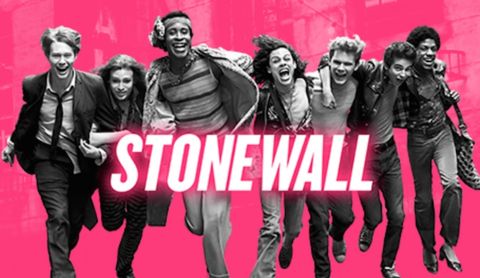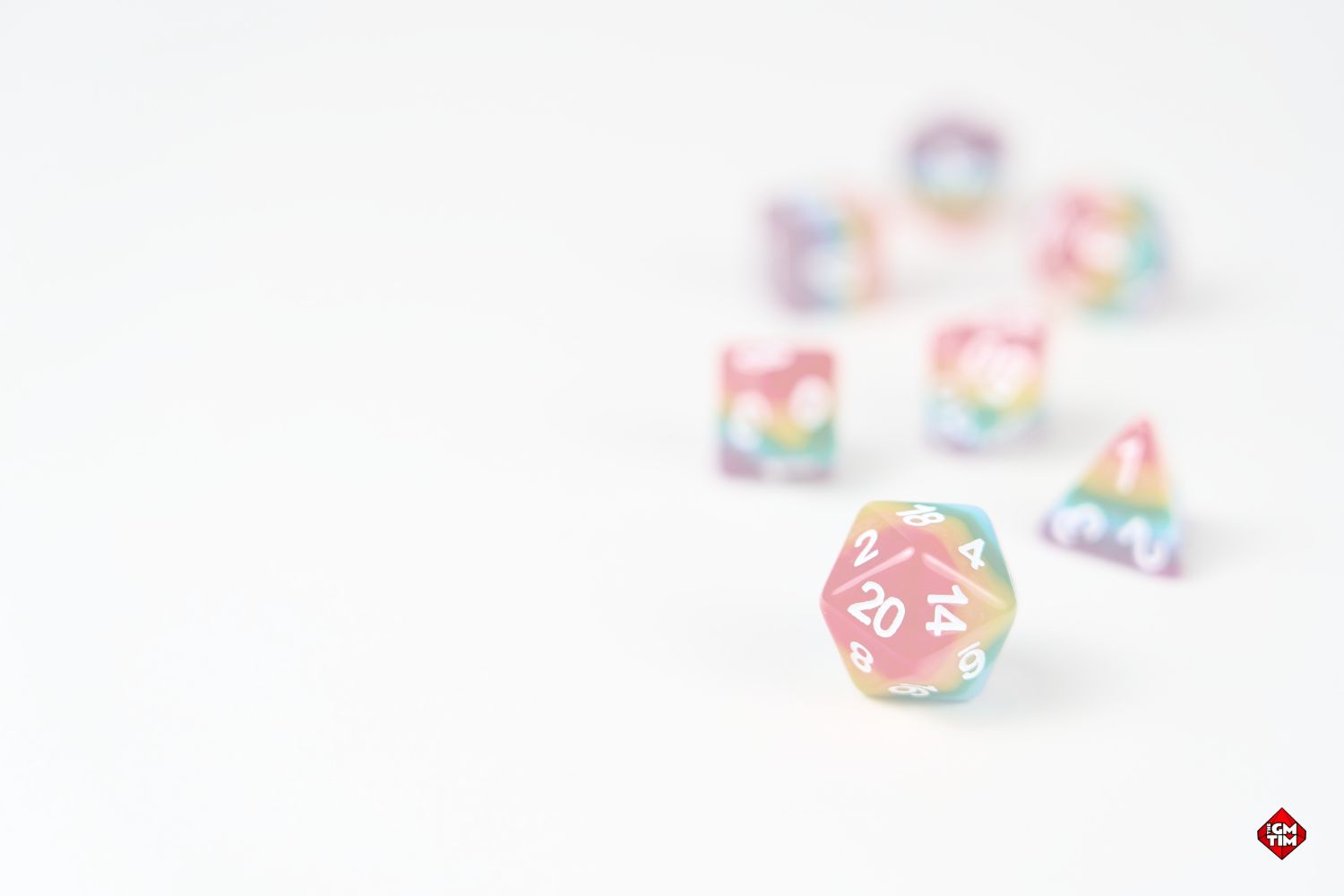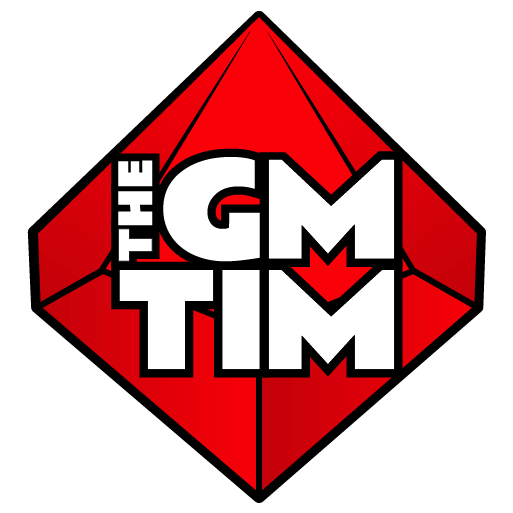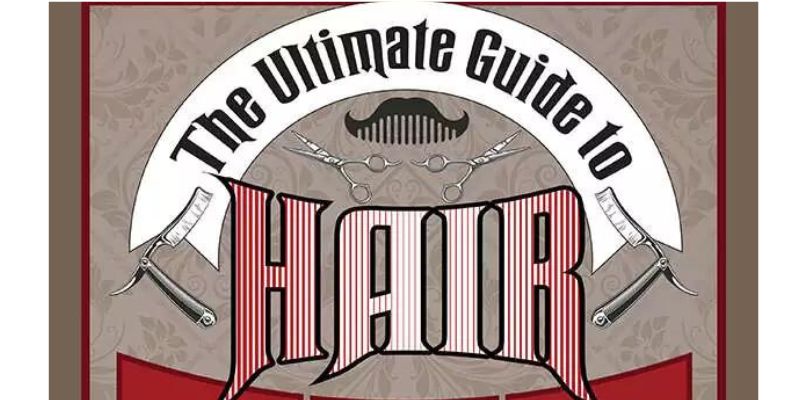My earliest characters played, that were not Spiderman, were often female characters. Not out of gender dysphoria, these early characters let me explore feelings I didn’t know how to name or express—not safely, anyway. While the out-of-game world told me I’d die sick and alone because I was a deviant for who I was assumed to be attracted to, in-game I could live the same adolescent and young adult life my friends did. That’s the power of TTRPGs: they let us explore and rehearse lives bigger than the boxes society forces us into. 25 years later and I’m still playing at tables, conventions, and events, which require active inclusion. ‘All are welcome’ isn’t enough anymore. Really, it never was. Active inclusion is base line. We need Queer Joy.
Disclaimer
Before I get into this, I acknowledge, yes, some of the examples I give in this discourse are personally anecdotal, yet repetitive across tables and years. For larger issues, I link references to back up the claims within my anecdotes. None of this is to say “every single table” so don’t come at me with “not all” crap because it doesn’t matter. The fact that enough exist to cause a problem is enough. Instead of “Not-all”ing me and others, use your awareness to call out the inequity when you see it. Be a part of the solution instead of creating a new problem.
The Neutrality Myth: Why Silence Fails Queer Players
I hate that in 2025 we still have to explain, and often defend, diversity. It’s wild. Especially in tabletop role playing games (TTRPGs)—an entire hobby rooted in people who were othered during the jocks-vs-nerds decades of pop culture. And yet somehow, we’ve ended up with this weird cultural detour where being “welcoming” is seen as the same as being inclusive. Spoiler: it’s not.

Including diversity and, in the case of this discourse, Queer Joy isn’t about diversity, checkboxes, or being tolerated. It’s about being celebrated, creating a stronger support, maybe even another rebellion. I use the word queer through this discourse to include all of us in the alphabet mafia; two-spirit, lesbian, gay, bisexual, transgender, queer and questioning, intersex, and asexual or agender.
“Ugh, GM Tim,” I can hear you say. “It’s just games, why do you have to bring politics into it?” Partly because it affects me all the time. Partly because I don’t see enough of my peers doing it. Unfortunately, there are still people, especially those with or in power, who consider others as less-than. This othering politicizes queer existence because it becomes something to be erased. Saying “let’s leave politics out of it” isn’t neutral—it’s harmful.
All are welcome is a start point, a bare minimum really. For some folks, even that is only conditional. It’s the floor, not the ceiling. Worse still, it often becomes a smokescreen for doing nothing. There’s this idea that if we “just don’t make a big deal” about inclusion, then the table is neutral and everyone is fine. All this does is encourage tolerance or apathy. Apathy is dangerous for marginalized people. It essentially signals that since you feel no hardship, the status quo must be fine, and we just won’t worry about making some people feel uncomfortable. Tolerance is even worse. If we tolerate those who are intolerant of others, we risk eroding tolerance itself.
In Canada, where I live, our Charter Of Rights and Freedoms implicitly acknowledges this. No right is absolute or inherently more important than another. Freedoms, such as expression or religion, can be limited by laws protecting other rights, like equality and safety from discrimination or hate. For example, in Canada we don’t actually have freedom of speech, our freedom of expression is limited by hate speech laws, and religious freedoms do not override someone else’s right to live openly and safely, even if certain religious beliefs disagree with their existence.
In a game sense, it’s an unbalanced class mechanic that benefits most of the classes except one or two, yet it keeps making it through playtesting, because only certain people are being listened to in the playtest. Since the rest of the players don’t ever use the affected class, they don’t care about the mechanic. Essentially that neutrality serves the dominant group, even if it is unfair for those who really love the affected class.
Therefore, these self-proclaimed “neutral” game spaces often end up reinforcing the same old defaults: that everybody is cisgender, straight, able-bodied, and white until otherwise stated. When someone says, “I don’t think about sexuality in my games,” what they actually mean is they are thinking about straight sexuality so constantly and unconsciously that it’s invisible to them. That’s not neutral. That’s bias.
The Cost of Staying Quiet
Let’s define queer joy. It Gets Better Canada suggests Queer joy “is about reclaiming space, visibility, and agency in a world that often seeks to silence or erase LGBTQ+ voices.” Queer joy is something I learned in overt circumstances like Pride, yet not in daily aspects till much later in my life. Like many queer folk, I had to fight my own conditioned and internalized homophobia. When I finally started to break through those fears and embrace joy, boy-howdy did I pursue it. Queer joy is not just passive representation; I have to challenge myself, and society, every day. It’s active unapologetic selfhood, chosen family, creativity, messiness, glamour, and resistance.
K, So Why Does It Matter In Games Though?
I once had a player leave my table after few sessions, the group didn’t last much longer than that, it happens. That sent me a sincere message thanking me for the game, in the end it just “wasn’t for them.” There was no animosity, and I didn’t think much of it until I ran into them months later at a boardgame shop. They told me again they were excited to play with me; just kinda sad they couldn’t play their character. “What do you mean?” I asked.
“I just felt like I wasn’t really being heard or seen.” they said. It turns out, they’d tried to play a nonbinary rogue, the rest of the table kept misgendering their character, and nobody including me stepped in. That was a gut punch. I had failed that player by not being attentive and assuming my “queerness” or “inclusive vibe” would take care of itself. It didn’t.
Another example comes in the 10s while I was attending university. I was part of a group that was organizing a space for queer and diverse gamers. The experience shaped my life dramatically. I worked really hard at it and made some very dear friendships that still exist today. Sadly, I had not really learned the intersectionality of othering in society, even though I was studying it within my degree. That would be a hard mistake lesson to learn, I would piss off some cool people before I finally understood that my ignorance of privilege and my belief of “well, not me” was actually doing more damage than my queer contributions to the larger group was. In fact, it was holding back my own queerness and hindering my own abilities to strive for equanimity.
Prioritizing Queer Joy Over Tropes
For decades now, if queer people exist in culture: texts, movies, books, TV, TTRPGs, etc., it is usually as tropes. We are punchlines, tragic deaths, or dangerous deviants. A flamboyant queer coded villain. A “confirmed bachelor” who sacrifices himself for the straight couple’s emotional growth. A lesbian whose only function is to die and motivate her (usually male) party member. These aren’t one-off issues. It’s damage done to our culture from things like the Hays Code that never really went away. These moral codes still affect today’s ratings; they became patterns.

These patterns don’t really add diversity, they only feed on or create stereotypical extremes. Or worse, they get things really wrong or blind people into erasing particularly important aspects from the source culture.
We can change patterns. It’s not difficult to include diversity appropriately. Author José Muñoz described queerness as imagining and rehearsing a better, more joyful future. Intentional, joyful inclusion in games isn’t just about better representation now, it’s about building play spaces that anticipate and rehearse a better world, one that affirms queer lives as thriving, whole, and ordinary.
I once ran an Adventurers League game at a convention where the characters did a shopping pitstop and short rest. To add flavour to the short rest I had the female merchant’s wife bring lunch. That moment showed me the power of what I now call the 3-Sentence Rule. After the game, one of the players said to me, “I liked that a queer couple in a game wasn’t… a thing. It was just there. Thank you.”
That’s the power of joy over trope.
Why TTRPGs Matter: My Journey to Queer Joy
I grew up in the Canadian rural north. It was the kind of place that I describe as, “where men are men, and moose are nervous.” I was closeted, it didn’t matter—everyone either knew, or had decided, I was gay, before my naive self even knew what that meant. I got beat up weekly though middle and high school. Culture and people around me told me that I would die from AIDS, cause that’s what happens when you’re gay. My christian friends (and even some parents) would causally remind me I was going to hell, enough that at one point I even decided I was cured and joined their church. That didn’t fix anything. I still had people go to my bosses trying to get me fired cause “their kids would catch the gay.” Even my first sort-of-not-really boyfriend, whom I met at that church, told me he had to marry a girl so he “wouldn’t be in sin” with me and we couldn’t talk anymore. I walked away from religion and faith after that. All of that happened in roughly a ten year span from the late 1990s to the late 2000s. Not that long ago.
I’ll tell ya, you make some pret-ty poor life decisions when you are that worn down and desperate for affection or inclusion.
The Love in The Game
Somehow, through all of it, I found a group of friends to play TTRPGs with, including the guy who taught me how to be a GM, my Yoda. In those games I truly got to exist! I never properly dated they way straight people got to, except my character could. I had one in-person actual boyfriend for about 7 months (remember those poor decisions I mentioned), in-game I got to have one before and after him. I got to be someone else, somewhere else. I wasn’t a target. I wasn’t an experiment drunk, late at night. Our GM never mocked, always actively included me, and generally made me feel safe and welcome. I was allowed to play being loved, because with this group of friends, I was.
That group, those games, they gave me a safe enough space to finally feel pride in who I was. They are a key part of what gave me the courage to start Pride in that small town.
It’s still going 23 years later.
Ch-ch-changes. Kinda Sorta Not Really
The 2014 D&D Players Handbook really lead the industry with that subtle, yet intentional, paragraph about diversity in sexuality and gender of your character. Actively including this in the book was such a big deal. Fantasy and sci-fi offers opportunities to introduce themes and ideas that can redefine the definitions of social constructs like gender, sexuality, and any ‘othering.’ This was one of the first mainstream TTRPGs books to overtly make this effort. Blue Rose, Thirsty Sword Lesbians, Queerz!, and Monster Hearts all are great and very important queer dominant TTRPGs, yet they have not hit the mainstream that D&D has. That paragraph got attention and importantly encoded non-cishet norms directly into the game, rather than having them remain an assumed concept.
Taking that paragraph out and washing it into a couple sentences in the 5.24 edition made me sad. Especially with how many queer people work in the industry. It could have been an oversight, or maybe it was believed to not be important enough to be in the book anymore. To me, it felt a little like an abandonment at a time when we need support the most.
No More Soft Coaching!
I considered writing this blog as a ‘how-to’ guide except, as I wrote, I kept getting so angry. I realized that I’m past soft coaching. I’m in more a demand-mode. Inclusivity is easy. Except that ease is not from just slapping a rainbow sticker on your laptop, or a backstory, or dropping a nonbinary NPC into a module. That’s performative allyship. This 2025 Pride season reminded us how fleeting performative allyship really is with the amount of companies who’ve rainbowed up for years, suddenly vanish because of fear. No. Real inclusivity and queer joy happens when the players feel safe enough to take up and share space in the real world, and the one the table is playing in.
Its time gang. Those of us who survived and grew up in the decades of erasure have every right to be angry and jaded. Except, I’m tired, I’m angry, and I’m tired of being angry.
Even after decades of death, jokes, baiting, and an eye-rolling amount of “maybe later” attitudes towards people’s life—inclusion still isn’t a constant consideration. I am done asking for permission or waiting for a voice to be given to me. And I refuse to be jaded. There are more “out” middle-aged queer peoples now than at any time in history. Because we lost so many of those who would have been our elders in the last 40 years, we are lest with the responsibility and get to define what our later-life culture gets to be. I would rather focus and use my anger to encourage and offer solutions. As a white cis gay man, I know my experience isn’t universal. I’ve had to learn, mostly unlearn, a lot. I also have to make sure I do what I can to affect change so that those younger than me don’t have to suffer the treatment I did.
Ok, So What Can We Actually Do? 4 Ways
Believe me, if there were a magic wand that could be waved and fix this issue in gaming, it would have been waved by now. This is going to take effort from everyone, especially those not in the queer community, looking at you Allies. Like most marginalised peoples we are not causing the problem. We can’t be the only answer to the solution.
As you read through the “4 Ways” I offer you to make it better, I want you to think about your own table. Don’t just nod along—make a commitment. Write down one specific thing you’ll do at your next session to build queer joy and then follow through. If you need a hand, I gotchu. Each way has actions you can take to apply the practice.
Normalize Queerness in Worldbuilding – 3 Sentence Rule
Normalising is what good allies do in, and out, of game life. In gaming, normalising is the easiest place to start. Just let it be there. No subplots required. No coming-out arcs needed. Just let queerness live in the ordinary. Being aware of how distinct cultures in your game world behave is important. For example, not all communities assume family = blood. If you have moon-elves in D&D or Trill in Star Trek, it’s very probable a character could change pronouns throughout the campaign.

The bare minimum is a simple as a sentence, “The captain and their spouse.” I find that almost overdone. Instead, I modified of the rule of three in writing; I call it the 3-Sentence Rule. “The wizard’s husband brings lunch during the ritual prep. His husband teases him about an incantation miss-pronunciation with a wink to the PCs. The wizard rolls his eyes, corrects his pronunciation, and keeps chanting.”
The 3-Sentence Rule
The 3-Sentence Rule isn’t just about casually mentioning queer characters. It’s a way to normalise them effortlessly within your world, with less risk of resorting to tropes. In fact, this rule is useful for introducing any character, item, NPC, etc. that you want to give some literary weight to, without making a big thing about at the time. Here’s how you use it,
- How they enter the scene: Introduce the queer character by their role or relationship, casually and clearly. (The wizard’s husband brings lunch during the ritual prep.)
- Emotion-based interaction: Show them interacting briefly in a relatable, authentic way—teasing affectionately, checking in emotionally, or simply engaging in everyday dialogue. (His husband teases him about an incantation miss-pronunciation with a wink to the PCs.)
- How they exit the scene: Wrap up naturally without lingering or calling attention to their identity specifically. (The wizard rolls his eyes, corrects the pronunciation, and keeps chanting.)
Action: The next time you introduce a new NPC, casually mention, or interact with their queer partner. Even better, introduce your player’s favourite Boblin-the-Goblin NPC’s spouse. This adds personal stakes for the players. The 3-Sentence Rule gives queer characters visibility without tokenizing or overly dramatizing their presence.
Stop Pretending “Ignoring Sexuality” Helps
This comes up constantly: “My games don’t really focus on romance.” or “I just don’t think about gender or sexuality at the table.”
Unless no one in your world flirts, has a spouse, has a gendered title, or has a family backstory, what this actually means is: “I only think about cishet relationships.” This isn’t an attack. It’s the way the culture we consume has been crafted. I can prove it. Think about the movie WALL-E. What’s their gender? You probably said ‘he,’ right? Why? There’s no proof of that. Not once in the movie is there a specific gender or sexuality marker for Wall-E or EVE. There is however assumptions baked into the cartoon by cishet-coded storytelling. It happens all the time in books, tv, and movies. When you do it in your games you might not even notice it.

Queer players notice. We’ve always noticed.
Actionable Steps for Addressing Sexuality at the Table
When I say, “stop pretending sexuality doesn’t exist,” I don’t mean your table needs romance arcs every session, even a game of Blue Rose wouldn’t want that. What I do mean is paying attention to how you make space for characters’, and players’, identities as naturally as you would for anything else:
- DMs: When you write down the character’s names in your notes, or when you have them write their character names on the table card, get them to add their character pronouns. That helps you and co-players not misgender the character throughout the session.
- Players: Clearly state your character’s pronouns or even relationship status when you first introduce your character. It doesn’t have to, yet can, be blunt. “I’m Braga, she/her pronouns.” You can casually drop it in: “I’m playing a half-orc cleric named Braga, she’s tough and sentimental—her girlfriend’s charm bracelet is always on her wrist.” It’s quick, clear, and sets a welcoming standard at the table among each other, its not relying on the GM to drive the bus, and you just gave the players and GM something to connect to your character with.
Action: Before playing, when you introduce yourself to the table, add your pronouns you go by. DON’T MAKE THIS A BIG DEAL! It’s not! You are simply setting the parameters for your real life character! If Braga would be cheesed for being misgendered why wouldn’t Tim?
Safety Tools Encourage Creativity. They Don’t Censor It
Hot Take: Tools like the X-card, Lines & Veils, and Script Change aren’t there to silence content. They’re there to amplify joy by building trust. They let you take emotional risks knowing you won’t be driven over a cliff. They also help you check in with yourself.
Whenever I have pushback to these types of consent concepts, it’s always from the idea that “well, now I’m being restricted.” In a way, yes. You are. Except, why is that bad? The application of these concepts makes it clear that people at your table can feel safe and grant them permission to be vulnerable and explore joy without being threatened or punished. Also, you don’t know what has happened in someone’s life and there is little reason how reskinning spiders into goblins in a pinch would be an impasse to the game.
Queer Joy is loud, it’s soft, it’s dramatic, it’s flirty, it’s chaotic, it’s camp, and it deserves a space that protects that expression, not flinches at it. When a table has guardrails in place, queer players can go big. We can stop holding back or masking, like we often do in real life. We can be messy. We can sparkle.
Implementing Safety Tools
You don’t need a perfect moment. Just introduce the tool(s) you plan to use clearly, explain briefly, and then use them consistently.
- DMs: If you are in a home-game you can introduce whichever of these tools work best for you. Granted, the best time for this is at the start of a campaign. Keep in mind, there is no rule that states a session 0 must be at the start of a campaign. Doing a check-in mid campaign is super helpful too.
- Players: If your DM hasn’t introduced safety tools, take ownership and bring it up gently: “Hey, can we quickly talk about using Lines & Veils or the X-card? It’d help me feel safer exploring the story.” This keeps it non-confrontational and owns that the game would be better for you.
If you are at a Convention, running a one-shot, or want to try something now, today, here’s my Cine-limits safety tool. You have to know the adventure you’re about to run—that’s important.
Action: As the table gets settled present some of the possible triggers the adventure may have. “Hey, here are some of the things in this game that some might find a bit intense or concerning: x, y, z. What movie style do we want to play this in? Deadpool, Indiana Jones, Star Wars, or Lion King.” You can do this publicly, though I recommend everyone write their choice on a piece of paper. The lowest one written down is the style you’ll run the game. Never share who wrote what, or what you might have modified in the adventure. It. Doesn’t. Matter. The players will have an exciting time, like they did watching those movies.
The styles are (in order): Deadpool, Indiana Jones, Star Wars, Lion King. These movies are all popular enough that most at your table will know them. They all deal with big themes and intense moments in a range of styles. Deadpool has intensity, no holding back, blood, gore, and crass jokes. Indiana Jones has deadly traps, critters that frighten people, some nasty scenes. Star Wars has explosion, sword fights, and limb amputations without gore. Lion King has intense fights, high stakes, yet pans away from any harsh brutality or love scenes.
WARNING: I do not offer this as a complete replacement to a safety tool. Only as a fast and loose way to introduce and understand them.
Don’t Treat Representation Like a Checklist
You’re not meeting a quota. You’ll only build a world where queerness feels like an afterthought.
Let us be:
- Heroes and villains
- Sidekicks, parents, rivals, idiots, and legends
- Joyfully in love. Openly complicated.
- Alive at the end.
PS: queer-coded villains are not representation. They’re tropes, often written by people uncomfortable with queerness. If you want to include queer villains, great! They absolutely exist. Just make sure they are not pure stereotype or coded gay because evil, also there ought be queer heroes who get to be joyful, powerful, and safe. Otherwise, all you’ve done is reinforce old ideas that still hurt people now.
How to Actually Avoid Checklist Representation
Yes. I am aware of the irony that I am giving you a list after telling you to not make a list. The point is: this is not finite, nor a thing to check-off-so-the-queer-community-doesn’t-come-at-you.
Action: When creating ANY characters or NPCs, pause and ask yourself:
- “Am I falling into any marginalised people stereotypes or tropes here?”
- “Have I given this character meaningful motivations, relationships, and agency beyond their identity?”
- “Would changing this character’s identity remove depth from the story? If yes, I’m on the right track.”
Making this a regular practice for your gaming is one of the differences between a great DM and a good DM. Don’t limit this to only including queer characters. Being mindful means intentionally weaving authentic characters into your narratives. It ensures their lives enrich the stories rather than simply ticking off a diversity quota.
Design Worlds Where Queerness Thrives, Not Just Survives
Ask anyone who plays TTRPGs regularly, it’s not just a game, its evolved so much more beyond that in its last 50 years. I knew that was true, yet until I wrote this, I didn’t realise how true for me it was. It, and that group I mention from way back, probably saved my life. Being in that group is a canon event for me. It’s the place where I got to have an adolescence I saw in the movies and where I got kissed without shame. In the game I wasn’t just someone’s best friend, going to die from disease, be a cautionary tale, a secret, or a punchline. I was a HERO. I was whole. No one could take that away from me because I rolled the dice, I shared the story, and I survived.
This is a core part of why I love the game so much. It’s why, when I run games at home or even at big events like my upcoming queer-centric game at D&D in a Castle, I always strive to create a space where queer joy thrives. I’ve felt what it’s like to be that person after years of being ignored or handwaved. I never want another player to wait as long as I did to feel that kind of joy. Because I know what it’s like to be that player who’s finally being seen and encouraged.
I don’t need or expect everyone, especially cishet men, to write a queer masterpiece. I don’t even want you to center every session around identity. I want to help others have their canon events in games. All you need to do is be aware, and part, of building gaming spaces where queer players are safe enough to take risks, be messy, be loved, be loud—and win. Not just survive. Win.
So ask yourself: when people leave your table, what world have you rehearsed with them?
And was joy part of it?






0 Comments